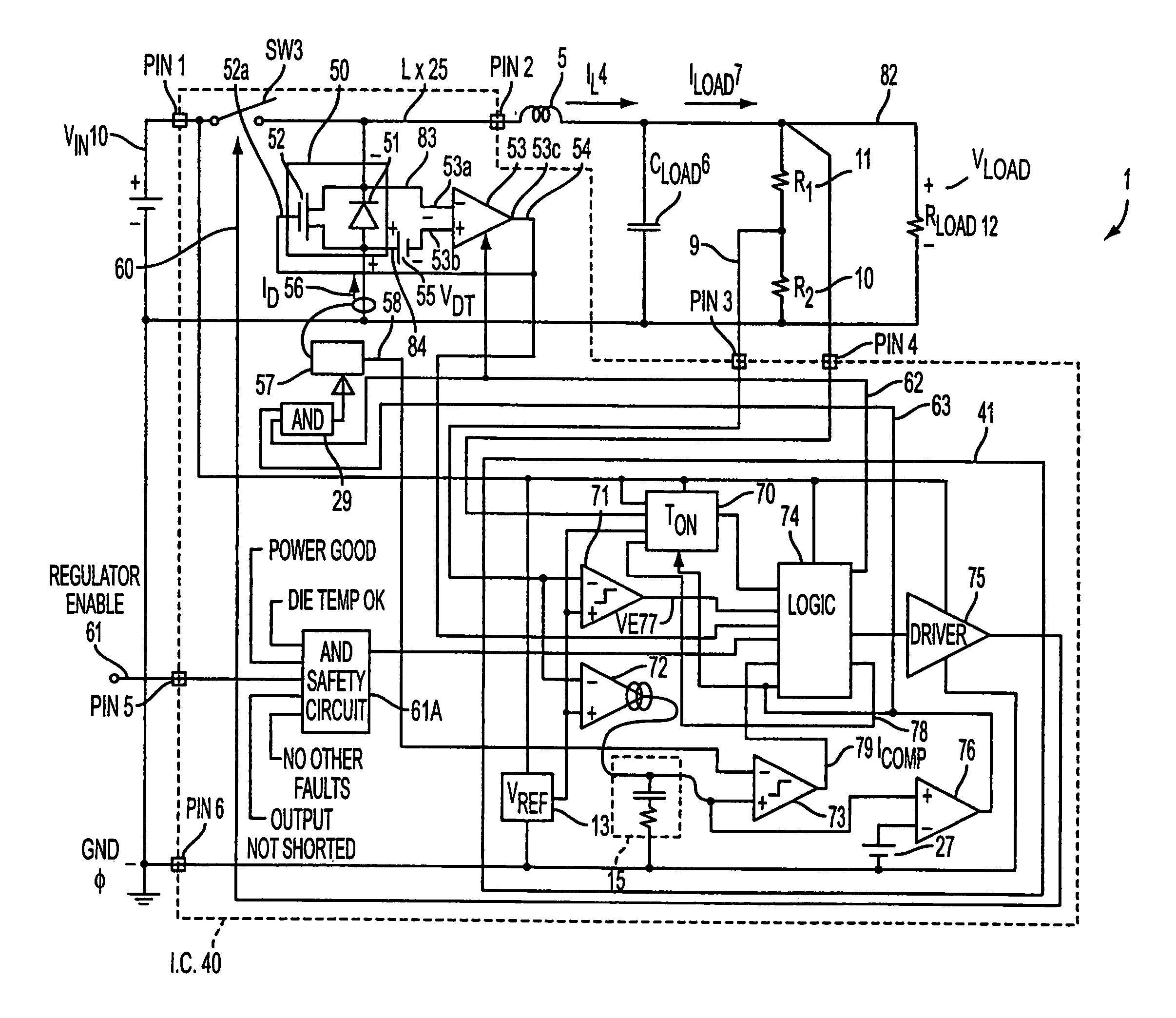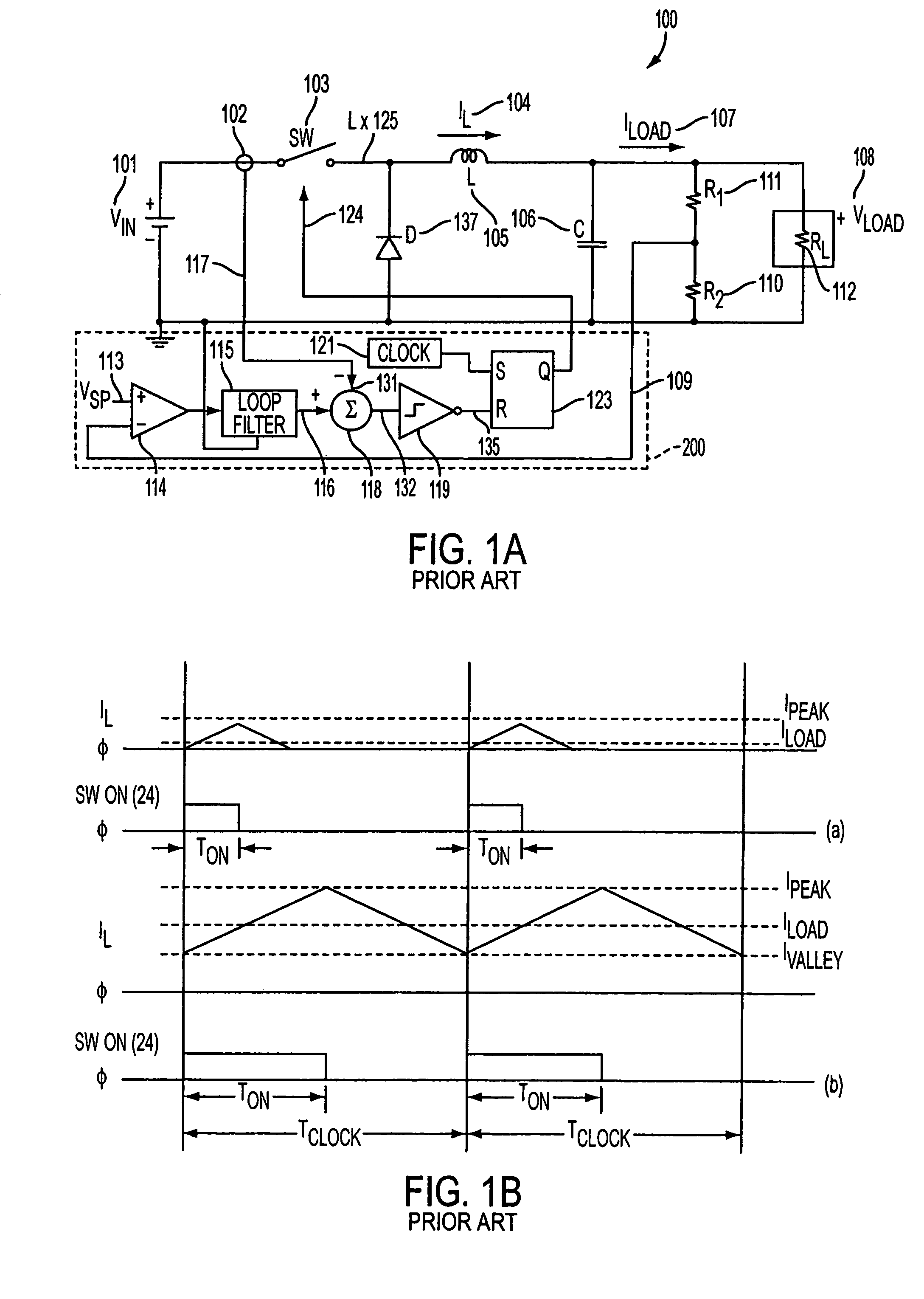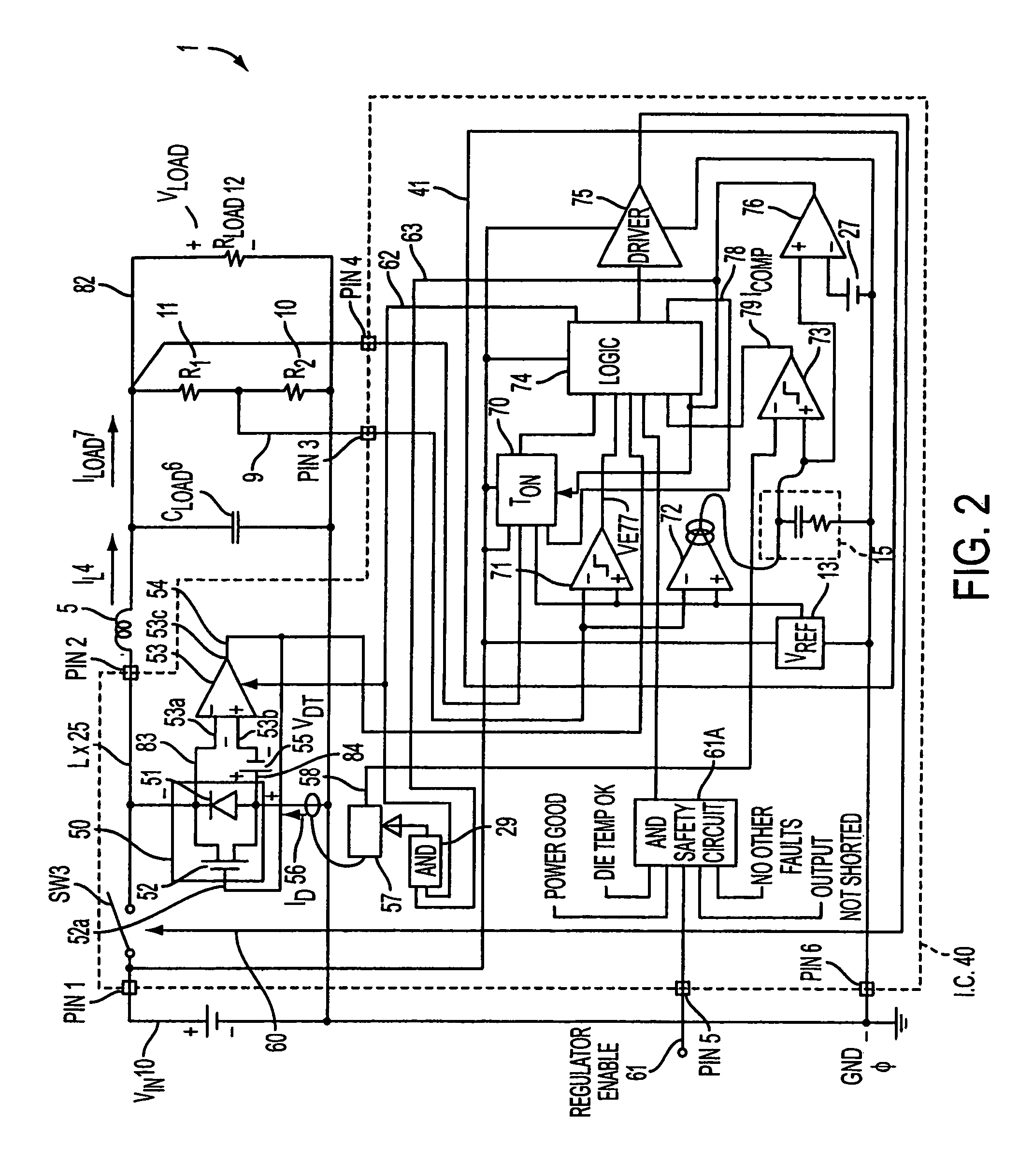Current mode switching regulator with predetermined on time
a current mode switching and predetermined technology, applied in the field of switching regulators, can solve the problems of insufficient use in many applications, insufficient i>a/i>) and prior art techniques, and achieve the effects of improving the regulation accuracy of output voltage, reducing ripple current value, and superior light load efficiency
- Summary
- Abstract
- Description
- Claims
- Application Information
AI Technical Summary
Benefits of technology
Problems solved by technology
Method used
Image
Examples
Embodiment Construction
[0035]The present invention now will be described more fully hereinafter with reference to the accompanying drawings, in which preferred embodiments of the invention are shown. This invention may, however, be embodied in many different forms and should not be construed as limited to the embodiments set forth herein: rather, these embodiments are provided so that this disclosure will be thorough and complete, and will fully convey the scope of the invention to those skilled in the art, like numbers refer to like elements throughout.
[0036]FIG. 2 illustrates an exemplary current mode switching regulator in accordance with the present invention. Referring to FIG. 2, in the given embodiment, the switching regulator 1 includes a voltage source VIN 10 having a first lead coupled to a first lead of a switch, SW3. VIN is preferably supplied by conventional sources such as batteries or other power sources, and the switch SW 3 is preferably a type of positive-channel metal-oxide semiconductor ...
PUM
 Login to View More
Login to View More Abstract
Description
Claims
Application Information
 Login to View More
Login to View More - R&D
- Intellectual Property
- Life Sciences
- Materials
- Tech Scout
- Unparalleled Data Quality
- Higher Quality Content
- 60% Fewer Hallucinations
Browse by: Latest US Patents, China's latest patents, Technical Efficacy Thesaurus, Application Domain, Technology Topic, Popular Technical Reports.
© 2025 PatSnap. All rights reserved.Legal|Privacy policy|Modern Slavery Act Transparency Statement|Sitemap|About US| Contact US: help@patsnap.com



